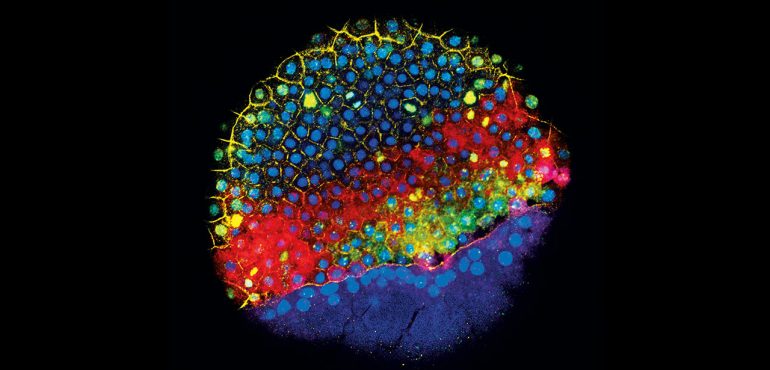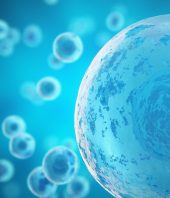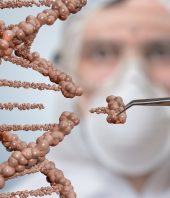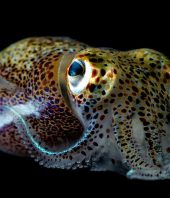Science has chosen single-cell analyses of gene activity through time as its 2018 Breakthrough of the Year, honoring a trifecta of methods that together are enabling researchers to determine, at the individual cell level, which genes are turned on and off as an early embryo develops.
"In 2018 alone, studies detailed how a flatworm, a fish, a frog and other organisms begin to make organs and appendages. Groups around the world are applying the techniques to study how human cells mature over a lifetime, how tissues regenerate and how cells change in diseases including cancer," said Science staff writer Elizabeth Pennisi.
The process involves isolating whole cells from organisms, sequencing their genomic contents in what is known as single-cell RNA sequencing or single-cell RNA-seq, and tagging early cells and their descendants to track how they split into multiple types during development. Scientists postulate single-cell RNA-seq could transform the basic biology and medical research landscape in the next ten years.
"The ability to isolate thousands of individual cells and sequence each one's genetic material offers a snapshot of what RNA is being produced in each cell at that moment. Because RNA sequences are specific to the genes that produced them, researchers can immediately see which genes are active. These active genes define what a cell does," Pennisi said.
In a powerful complement to single-cell RNA-seq, researchers have introduced molecular "trackers" — fluorescent tags or the gene editing technique known as CRISPR - into early embryonic cells to mark them and track how they eventually give rise to distinct cell lineages later in development.
"By combining these techniques with single-cell RNA-sequencing, scientists can both monitor the behavior of individual cells and see how they fit into the unfolding architecture of the organism. Others are applying similar techniques to track what happens in developing organs, limbs or other tissues — and how those processes can go wrong, resulting in malformations or disease," said Pennisi.
"The single-cell revolution is just starting," she added.
"These technologies create some of the most extraordinary movies ever made, showing how a single cell grows into the intricate tissues and organs of a mature animal," said Tim Appenzeller, Science's news editor.
Various efforts are currently underway to characterize every type of human cell and its location in the human body, including a global research collaboration known as the Human Cell Atlas. The groups involved hope to better understand how individual cell types together build tissues and organs.
"Already, one Cell Atlas project has identified most, if not all, kidney cell types, including ones that tend to become cancerous. Another has revealed the interplay between maternal and fetal cells that allows pregnancy to proceed," said Pennisi.
Other groups hope to harness single-cell RNA-seq to better understand what happens inside of individual cells during the onset and progression of illnesses such as cancer and diabetes.
Each year, Science's reporters and editors choose the Breakthrough by considering the year's most significant scientific discovery, development, or trend. The journal also includes the results of a separate readers' choice poll in which the public voted on its favorite science breakthrough. By popular vote, readers also declared tracking cell by cell development their winner for 2018.
The Breakthrough runners-up include a wide range of scientific topics. Among them is forensic genealogy, a strategy that has been used by law enforcement agencies to identify suspects in unsolved criminal cases. Officials can now mine millions of profiles from consumer genomic databases, zeroing in on genetic relatives to confirm a suspect's identity. This approach was used to track down a suspect in the "Golden State Killer" case and solve roughly 20 additional cold cases, though it raises ethical and legal questions related to genetic privacy and the extent to which law enforcement agencies should be able to access such databases without a warrant.
Another notable runner up is the detection of neutrinos — minuscule, hard-to-trace subatomic particles — originating from outside our galaxy. The feat required one cubic kilometer of ice at the South Pole, equipped with light detectors sensitive enough to record the rare, faint flash triggered by a neutrino. The detector, dubbed IceCube, captured one neutrino collision event on September 22, 2017 that researchers extrapolated to its likely source, a far-off galaxy called a blazar.
Science also named "Breakdowns" of the year. They include the gulf between what the world needs to do and what it is doing to limit human-induced climate change, a researcher's ethically fraught claim to have created CRISPR gene-edited babies and the plight of science in Brazil, where spending has been slashed and the new government has reversed commitments to address climate change.
Source: AAAS, Full Article






